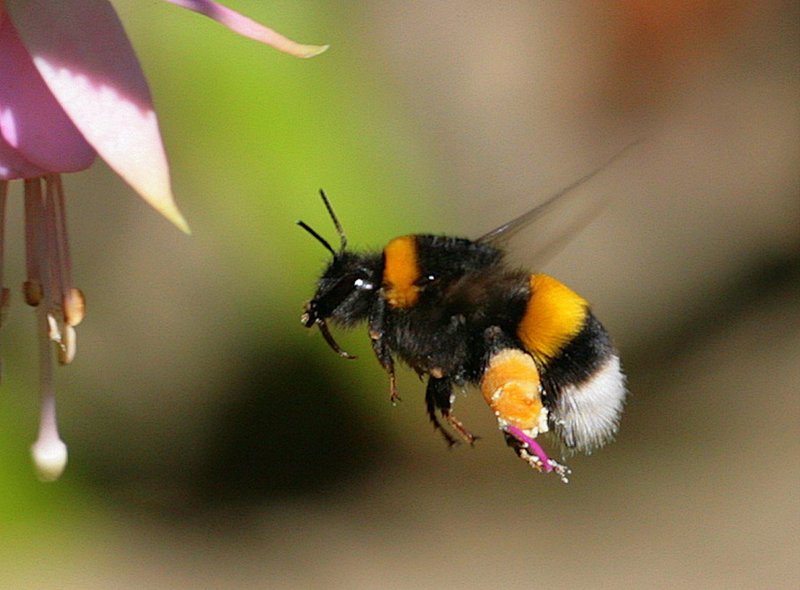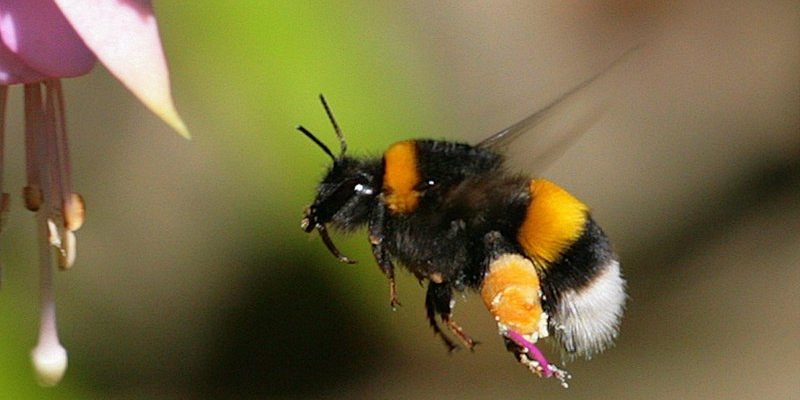
Whether you’re a gardening enthusiast, a nature lover, or just someone curious about the world around you, bumblebees pack a punch when it comes to fascinating facts. So, let’s buzz into 10 things you probably didn’t know about these hardworking pollinators. Trust me, they’ll change the way you see that little fuzzball buzzing nearby!
1. Bumblebees Are Super Pollinators
You might know that bees, in general, are good at pollinating plants, but bumblebees take it to a whole new level. Thanks to their strong flight muscles, they can fly in cooler temperatures and even when it’s drizzling outside. This ability helps them visit flowers when other bees are still tucked up in their hives.
Bumblebees collect nectar and pollen, which they store to feed their young. As they buzz from flower to flower, they transfer pollen, helping plants reproduce. This means that when you’re enjoying fruits, veggies, or beautiful flowers in your garden, bumblebees are often behind the scenes doing their vital work. They’re like little gardeners, making sure plants thrive.
Here’s the thing—about one-third of the food we eat depends on pollinators like bumblebees. So, every time you bite into a juicy strawberry or crunch a carrot, you can thank these fuzzy friends for playing their part.
2. They Have a Unique Way of Communicating
Ever wonder how bumblebees talk to each other? Well, it’s not through words or even body language. Bumblebees actually use vibrations! When they buzz, they create sound waves that can communicate different messages to their hive mates.
For example, if a bumblebee finds a good food source, it might perform a “waggle dance” to let others know where to go. This dance isn’t just for show; it tells them the direction and distance to take to find those tasty flowers. Imagine using a dance to give directions—pretty cool, right?
In addition to this dance, bumblebees can also create a “buzzing” sound by vibrating their bodies. This sound can signal alarm or excitement, let’s say, when they find a rival or encounter a predator. It’s a fascinating mix of dance and buzz!
3. Bumblebees Have Queen Bees
Just like a royal family, bumblebees have a hierarchy. They live in colonies that typically consist of a single queen, worker bees, and drones. The queen is the boss of the hive—her main job is to lay eggs. She can produce up to 2,000 eggs each day during peak season, which is a busy job!
Worker bees, which are sterile females, take care of most of the tasks. They gather nectar and pollen, care for the queen’s eggs, and protect the hive. Drones, the males, have one main job: to mate with the queen. Once that’s done, they don’t stick around for long and may be pushed out by the workers as winter approaches.
The queen doesn’t just appear out of nowhere, either! She hibernates during winter in a sheltered spot and emerges in spring to start a new colony. It’s almost like she’s the superhero of her little world, kicking off another cycle of life.
4. They Can Regulate Their Body Temperature
Something that’s truly remarkable about bumblebees is their ability to keep warm. Unlike most insects, they can generate heat through muscle activity. When it gets chilly, they can shiver their flight muscles to raise their body temperature, allowing them to fly even on cooler days.
This heat regulation is vital for bumblebee survival. If it’s too cold, they can’t fly efficiently to gather food. They tend to be most active when temperatures are around 50°F to 85°F, which is part of why you’ll often see them buzzing around in early spring and late summer.
It’s almost like having a built-in heater! While other insects are stuck waiting for sunny days, bumblebees can brave the cooler temperatures and keep keeping on.
5. They Have a Short Lifespan
You might be surprised to learn that while bumblebees are busy little creatures, they don’t live very long. The entire life cycle of a bumblebee colony lasts about one year. The queen lives the longest, up to a year, but workers and drones usually only live for a few weeks.
After their busy season in spring and summer, the queen will lay eggs in the late summer to prepare for the next generation. Once winter arrives, the queen is the only one to survive, hibernating until spring when she’ll start the cycle all over again.
So, while they might seem like they’re everywhere during the summer, remember that their time is short. They work hard in that brief period, and then they peacefully rest until it’s time to rise again.
6. Bumblebees Are Color-Blind
Despite all the colorful flowers they flit around, bumblebees don’t see the world quite like we do. They’re color-blind to red, which means they can’t see tulips and roses the way we appreciate them. However, they can see blue and yellow very well, which are colors found in many flowers they love.
Some flowers have evolved to attract bumblebees by displaying patterns that are visible in the UV spectrum but invisible to the human eye. This means that, even if we can’t see certain patterns or colors, bumblebees can spot them easily and will be guided to nectar-rich blooms.
Think of flowers as nature’s way of creating a treasure hunt just for bumblebees! While they might not enjoy the vibrant reds, they have their own beautiful world full of blues, yellows, and hidden patterns.
7. Their Humming Noise Has a Purpose
When you hear that gentle buzzing sound while the bumblebee is nearby, it’s not just noise—it’s a part of their flying technique! The sound you hear comes from their rapid wing beats, which can be up to 200 beats per second.
This buzzing helps bumblebees with a unique method of pollination called “buzz pollination.” They can grab onto a flower and vibrate their bodies, shaking loose the pollen in a way that other bees can’t. It’s like having a secret power that helps them get the job done more efficiently.
So, next time you hear that gentle hum, remember: it’s not just a pleasant sound; it’s a busy bee doing what it does best!
8. Bumblebees Are Declining
Sadly, the population of bumblebees is facing serious challenges. Factors such as habitat loss, pesticide use, and climate change are leading to declines in their numbers. The trouble is that their absence can seriously affect our ecosystems and food supply.
Conservation efforts are underway across many regions to protect these vital pollinators. Planting native flowers, reducing pesticide use, and creating habitats can help provide them with food and shelter. Every small action counts in helping bumblebees thrive!
It’s important to remember that we can all do our part. Whether you have a backyard garden or just a few pots on a balcony, planting flowers that attract bumblebees can make a big difference. It’s about giving back to those fuzzy little helpers that keep our world blooming.
9. They Can Recognize Flowers
Bumblebees have excellent memories, allowing them to remember and recognize individual flowers. They can learn which flowers offer the best rewards for their efforts. Research shows that they can even remember specific flowers’ locations for several days.
This skill helps them be more efficient in their pollination duties. Instead of randomly visiting flowers, they’ll go back to those they’ve discovered are rich in nectar and pollen. It’s like having a favorite coffee shop that you keep returning to for the best brew.
This ability to remember where the best flowers are not only benefits the bumblebees but also helps the plants. When bumblebees frequently visit certain flowers, it enhances pollination, ensuring those plants can reproduce and thrive.
10. They Can Fly Up to 15 Miles
Bumblebees are known for their short-range flying but can cover quite a distance when needed. They can fly up to 15 miles away from their nest in search of food. This ability allows them to explore various habitats and find diverse food sources.
In the grand scheme of things, this distance is significant for a tiny creature. Flying out to gather food means they can visit multiple flowers in a day, maximizing their foraging efforts. It’s like going on a little adventure every time they set out to work!
Just think about it: while you might have a favorite park or garden, bumblebees go on their own epic journeys each day, making sure to return home with a feast for their colony.
In conclusion, bumblebees are so much more than their fuzzy exterior and friendly buzz. From their role in our ecosystems to their unique behaviors, these little creatures are truly remarkable. Learning about them not only deepens our appreciation for nature but also highlights the importance of protecting these essential pollinators. So, the next time you spot a bumblebee, remember the incredible story behind its simple buzz—it’s a tale worth sharing!

